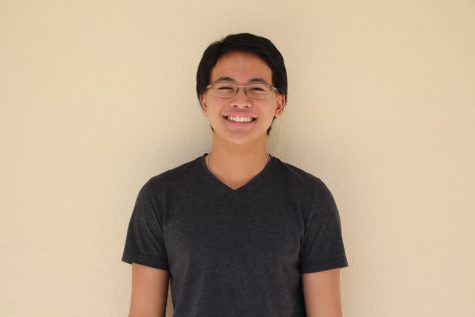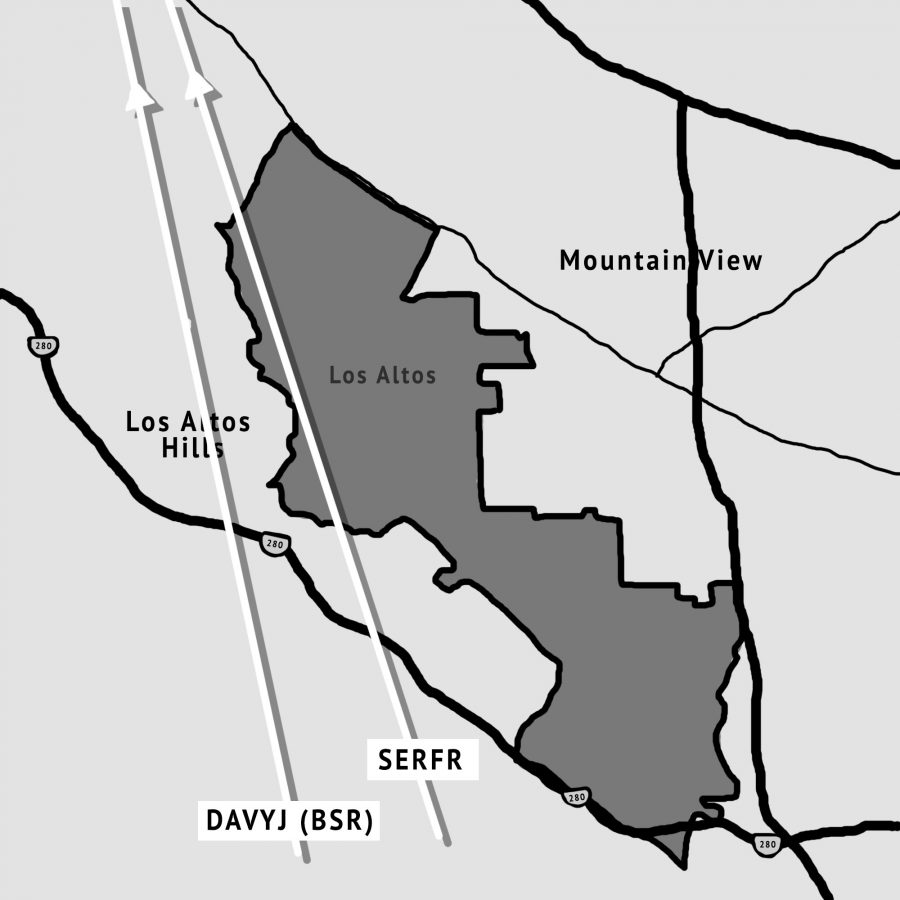Los Altos Residents Urge Change in Flight Path
The room shakes as everyone stands up for the Pledge of Allegiance. Papers rustle as the pledge finishes, and murmurings break out among the room about one of the most anticipated items to ever come before Los Altos’ City Council: airplane noise. So many residents are anxious to express their grievances that some must wait outside to speak because of fire safety regulations, and over 50 have filled out public comment forms.
At the City Council meeting on Tuesday, October 25, residents overwhelmingly supported having the council send a letter to Congress member Anna Eshoo’s Select Committee on South Bay Arrivals, a committee designed to tackle the issue of airplane noise in the Bay Area. On November 17, the committee will finalize a list of recommendations to Congress members Anna Eshoo, Jackie Speier and Sam Farr, who will in turn make those same recommendations and collaborate with the Federal Aviation Administration (FAA).
One of the reasons the Congress members created the Select Committee was because the FAA changed their original flight path of BIGSUR (BSR) to SERFR on March 5, 2015. BSR was a flight path over Los Altos Hills, but SERFR makes planes fly over Los Altos more often and thus increases overall airplane noise for Los Altos residents.
The letter the Council drafted strongly supported moving the flight path from SERFR to DAVYJ, a flight path that’s considered an updated version of BSR.
The residents’ complaints stemmed from the Federal Aviation Administration (FAA) updating their navigation technology from radar to a GPS-based technology called NextGen, along with altering the flight paths, and lowering planes’ flight altitude.
Because of the increased noise, residents not only suffered from the distraction but also the loss of property value on their homes.
“[My wife and I] used to be able to sit out in the backyard and listen to the songbirds,” a resident said at the City Council meeting. “Flights started coming over and rattling the chandeliers. I’m not an expert on flight paths, but I know when I bought my house it wasn’t under a flyway, and I could’ve bought a house for a lot less money under a flyway.”
Of the recommendations the Select Committee will propose, the flight path remains one of the more contentious issues. Alternate on the Select Committee and Los Altos City Councilmember Jean Mordo believes that changing the path to DAVYJ would be in the best interest of Los Altos residents because it would move noise levels back to where they were for thirty years, even if this isn’t an ideal win-win scenario.
“[DAVYJ] may not be the best solution for everybody, but it is the best in the sense that it will bring [the noise] back to where it was,” Mordo said. “Planes will [still] fly at the same altitude or higher than before, and it’ll be as quiet or better than before. [DAVYJ] is the best we can do and we can improve from there.”
On the other hand, Santa Clara County Supervisor Joe Simitian, the chair of the Select Committee, believes a short-term “50-50” compromise would equally split noise levels between cities, would be optimal for all towns affected by the issue. The “50-50” compromise is essentially the midway between DAVYJ and SERFR.
“Folks currently under the track understandably want to send it somewhere else,” Simitian said. “Folks under the alternate track understandably don’t want it back, so I’ve suggested [to the committee] that the FAA do everything they can to reduce noise along the flight path, but to the extent that if there is any residual noise it should be shared among the two flight paths for the immediate future.”
The final decision on flight paths from the Select Committee remains to be seen, and Committee members plan to also recommend other actions that they hope will help lessen the effects of airplane noise.
“[The recommendations we’re making include] flying higher, flying where there are fewer people, avoiding noisy aircraft maneuvers when possible and retrofitting existing aircraft to reduce noise where possible,” Simitian said.
After the Asiana crash in 2013 at SFO, the FAA updated Class B safety regulations which designates the airspace above an airport that descending planes can fly in. Because of the safety regulations, planes must horizontally thrust to modify their descent path, creating an excess amount of noise.
“When planes thrust horizontally, it’s very noisy,” Mordo said. “If they glide, you can’t hear them.”
In the Select Committee, there’s a consensus that the FAA should fix the Class B airspace by expanding the airspace that’s considered safe which would mean planes can glide through without creating much noise. If accepted, the FAA believes they can finish changes by next summer, or by the January of 2018 at the latest.

Legend says that if you reach deep enough into the inside pocket of Danny’s leather jacket, past the hordes of pens and six-sided dice moping dejectedly,...




Jean Mordo | Nov 17, 2016 at 7:30 pm
The Select Committee approved tonight the recommendation to implement DAVYJ by 8 votes for, 4 against. Gary Waldeck, Vice Mayor of Los Altos Hills voted with the majority. County Supervisor Simitian voted against.